Some folks have huge, lush gardens full of growing produce and gorgeous flowers. Some (currently) can only dream of having huge, lush gardens full of growing produce and gorgeous flowers. And some are stuck in the midst of a long, cold, everything-is-dead-outside winter. If you’re twiddling your green thumbs while the snow blows, living in an apartment or small house with no outdoor space, or progressing through a stage of life where you have no soil to call your own, you’re pretty much stuck with whatever marginally fresh vegetables you can buy elsewhere, right?

Nope! No matter where you live and what resources you have available to you, or what time of year it is, it is entirely within your power to grow large amounts of fresh, delicious, nutritious vegetables for you and your family. I’m not talking about some expensive indoor grow-tower or windowsill pot that gives you a total of five dinky parsley leaves, but a real way to grow real amounts of real food to sustain whoever grows it — and that way is through the miraculous process of sprouting.
Sprouting turns easy-to-store dry seeds into plentiful amounts of fresh, hearty vegetables in the space of a week. If sprouting was a widely-accepted and practiced part of our general food culture, we could effectively erase the vegetable-lacking, so-called food deserts, and the low quality of nutrition in low-income areas. We can offer real, homegrown nutrition to anyone who had access to water and a jar.

The only real barrier to this wonderful food source is acquiring the small amount of effort and education needed to grow your own sprouts, and the will to do it.
For many folks, those two barriers are enough to keep them from sprouting. As much as I wish to, I can’t change modern culture overnight. Nor can I make people want to eat fresh, delicious vegetables when so many have been indoctrinated that they are gross.
But if you want to grow some of your own food — whether you have a tiny New York apartment or a full 400 acres — sprouts are an amazing, accessible way to make good food happen.
Benefits of Sprouting
As much as I hate the cliched trendiness of the phrase, it isn’t an exaggeration to say that sprouts are nutritional powerhouses. You see, a sprout doesn’t really want to feed you … it wants to make a big, beautiful plant.
Nutrients
In the sprouting process, special enzymes and natural chemical processes transform the heretofore inactive endosperm (the stored starchy nutrition part of the seed) into readily-available nutrients and vitamins. Sprouted mung beans, for example, are loaded with vitamin C, K, B2, B9 and important minerals like copper. You can read more historical anecdotes about the nutritive and healing power of eating sprouts in this great 1970s article from Mother Earth News in its heyday.
Seeds
Aside from their culinary and healthy merits, however, I have found sprouts serve an additional and beneficial purpose. If you’re a seed saver (and I hope you are) you well know that plants are generous and will give you may times over what you actually need for the next planting season.
When I have given away and shared all the seeds I can possibly pass on in the fall, and still find myself with extra pea, brassica, radish, amaranth, and legume seeds, I sprout them through the winter for delicious no-garden-needed food.
How to Sprout Mung Beans

Mung beans are probably the easiest and most rewarding seed to learn sprouting. They’re forgiving, mild in flavor, and the resulting crunchy sprouts can be eaten raw, steamed, stir-fried, sauteed, and stuffed into everything from pitas to omelets. Once you have, literally, cut your teeth on these tasty tidbits, you can experiment with sprouting anything from soybeans to fenugreek to radish seeds.
Supplies Needed
Sprouting can be accomplished in many ways from poking holes in a plastic bag to using colanders and bowls to buying expensive, purpose-made sprouting jar sets. I find that using a canning jar is the neatest looking, easy-to-replace, customize, line up on a shelf, and aesthetically pleasing method, and that’s what I’ll detail here.
- Half-gallon canning jar
- Sprouting screen lid
- 1/4 cup of organic mung beans
Yield: More than 8 cups of sprouts
Yep, you read that right. In order to make more than 8 cups of crunchy, hearty sprouts, you need a measly 1/4 cup of dried mung beans. And it’s not just water that makes up that bulk. The sprouts are going to grow and generate more plant material. This is as close as you can get to generating food from thin air. Of course, if you don’t have to cook for an army like I do, you may want to experiment with sprouting things one tablespoon at a time.
Steps to Sprouting Mung Beans

- In your half-gallon jar, soak beans overnight in room temperature water (or at least 8 hours).
- Drain beans through mesh lid, then prop upside down in a bowl.
- Place jar in a dark place that is between 60- and 80-degrees Fahrenheit (I put mine in a cabinet in the corner of the kitchen).
- Rinse beans three times a day (or at least morning and night, if that’s all you can manage).
- Once the beans have grown to fully fill the jar (about 5 to 7 days) pull them out and into a large bowl and rinse thoroughly. Wash away as many of the freed seed coats as you can, but don’t fret if some end up in the mix — they won’t hurt you.
- Either use the sprouts in a favorite recipe or put them in the refrigerator.
- Consume within 2 to 3 days. Sprouts are pretty perishable.
A Simple Sprout Stir-Fry

There are many uses for prepared sprouts, but this simple method based on a common Chinese recipe, is a quick way to turn your no-garden harvest into a satisfying dish. Served with a bed of brown rice, it’s a great midday meal.
Ingredients
- Half-gallon harvest of sprouts (roughly 8 cups)
- Oil
- Minced garlic
- Minced ginger
- Dried chilies (optional, but recommended)
- Salt
- Sesame oil (optional)
- Sesame seeds
Heat a wok or deep skillet, then add oil, garlic, ginger, and sliced dried chilies. Saute until the oil is fragrant but the garlic has not browned.
Add rinsed sprouts to the pan (it should sizzle loudly) and stir-fry for a few minutes. The sprouts should reduce slightly in volume and take on a translucent luster when cooked. Don’t overcook and lose their crunch!
Serve steaming hot, with a drizzle of sesame oil on top and a sprinkle of sesame seeds.

Troubleshooting
If you follow my simple directions, things should work well 99% of the time. That said, sometimes sprouts don’t work out. Here’s when to start over.
- If the sprouts smell bad, they are bad. Do not eat them. Bacteria have begun fermentation or rot, which is not what we want with sprouts. Your jar might have been dirty, you might have forgotten to rinse the sprouts as often as they needed. Clean your materials and start over.
- If the sprouts have become more leaf than stem, they had too much light. They’re still fine to eat, but put your sprouting jar in a darker place next time, or consider growing light-loving microgreens — a different take on the same idea).
- If the sprouts don’t grow within a day or two with consistent rinsing, the seeds may not be viable. Start over with fresher seeds.
Other Things You Can Sprout
Though mung beans are probably the most common and popular type of sprout consumed in the world today, they’re by no means the only thing that can be sprouted. I’ve sprouted and enjoyed kale, cabbage, radish, fenugreek, wheat, lentil, mung, garbanzo, rye, and sweet pea seeds with wonderful results. I’ve sprouted both my own saved seeds and organic seeds that I bought from bulk food suppliers.
I would caution against using any old seed, though, as seeds not harvested by you, and sold as “not for human consumption” may come contaminated. Best to stick to your own saved seeds or seeds intended as food.
That said, I’ve yet to have good success with soy sprouts, but my unsuccessful, rotten-smelling attempts taught me that soy beans need to be fresh to sprout well. Mine were a few years old (lesson learned).
That’s just the tip of the iceberg, though. Here’s a more complete list of sprouting candidates. Bear in mind that every seed comes with its own, unique flavor, growing time, and way to be cooked. If the sprout bug bites, you can experiment with all the wonderful potentials that await you in the kitchen.
Final Thoughts
I hope this brief overview encourages those who have never tried sprouting to give it a go this spring, summer, fall, or winter. The ability to produce fresh vegetables from almost nothing is a great balm to the winter-weary heart, an encouragement to the city-bound homestead dreamer, and a wonderful meal inclusion to anyone who wants to make their own healthy, frugal food from the simplest of ingredients.







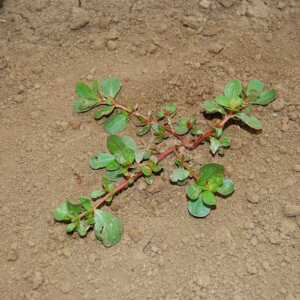



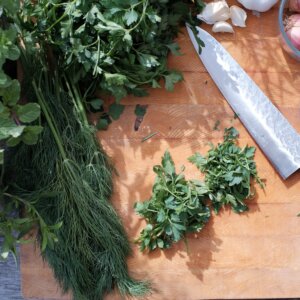

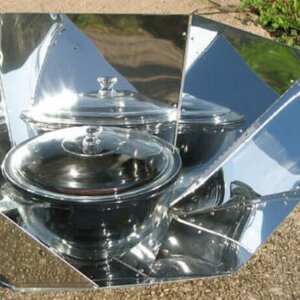






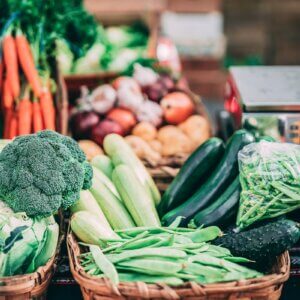




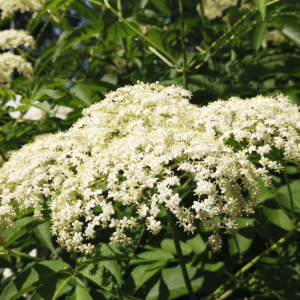
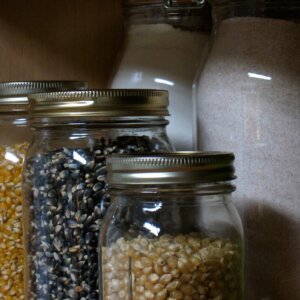

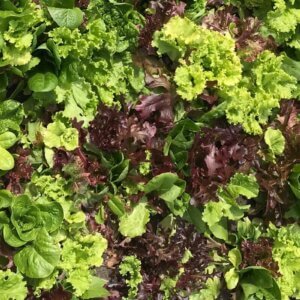

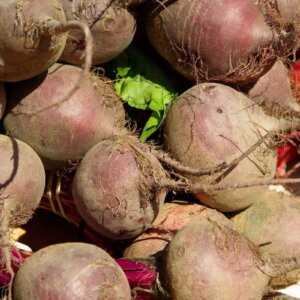
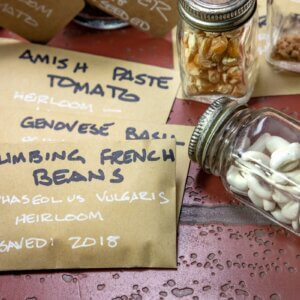










Leave a Reply